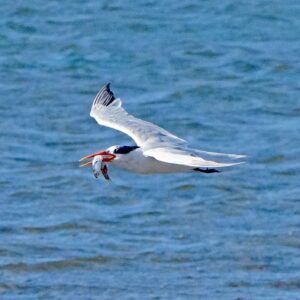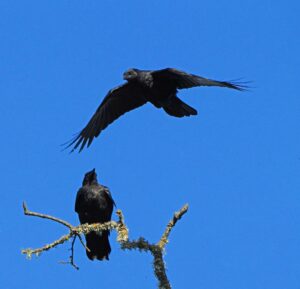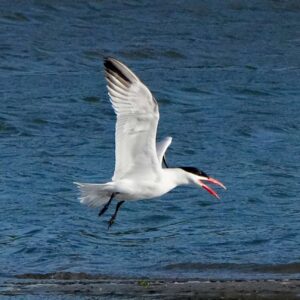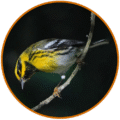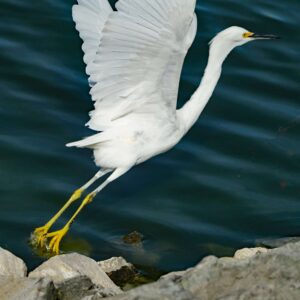
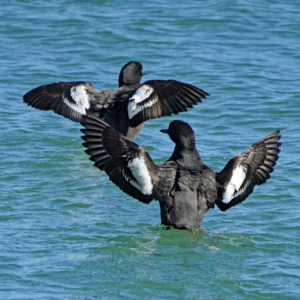
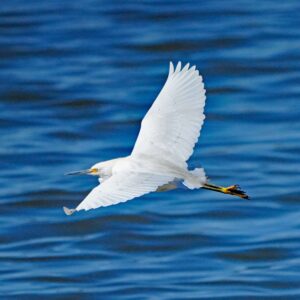
In a photo that Dick Evans recently snapped, a Black Phoebe swoops low over a pond at Las Gallinas. The green surface of the water is dimpled from the movement of the bird’s wings; the phoebe’s feathers splay out in a translucent fan. A single bead of flung water is suspended in the image—all of the momentum and power of the moment frozen in time.
A bird in flight is a beautiful thing, but its wings do more than simply getting it from one place to another. The sky above the Bay Area is a moving theater of wings—sharp, broad, ruffled, rounded—all telling stories about how different birds move through their different worlds, with bodies that have been shaped over millions of years to match precise needs.
Take the Forster’s Tern, silver and white with a sharp black cap, often seen hovering over marshes and sloughs. Their wings are elongated and slim, built for precision and speed. From thirty feet up, a tern can fold itself into a feathery dart, plunging into the water to snatch a fish with barely a splash. That sudden dive demands wings that can stall mid-air, then angle steeply and recover almost instantly.
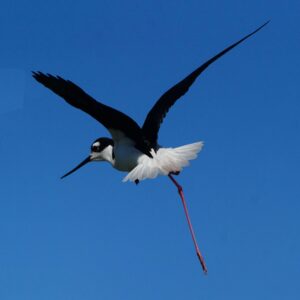

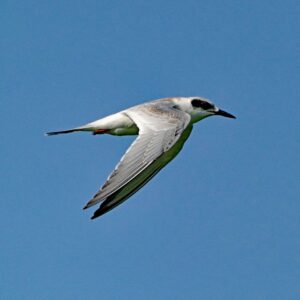
Physiologically, terns are built for efficiency and agility. Their long, narrow wings minimize turbulence and maximize maneuverability, making them adept at hovering and quick directional changes. This wing shape also allows terns to harness the wind, reducing the energy needed to stay aloft. Light for their size, they’re well-equipped for long migrations from their breeding grounds in Southern Canada to their winter homes as far south as Central America, often riding prevailing winds across vast distances with minimal exertion.
Contrast that with the Black Phoebe that Dick photographed at Las Gallinas: a compact, elegant insectivore found near creeks and shaded patios. Its wings are short and rounded—not built for distance, but for agility. A phoebe doesn’t soar; it darts. One moment it’s perched, tail bobbing, and the next it’s slicing a perfect arc through the air to pluck a gnat mid-flight. Where the tern thrives on open space, the phoebe’s world is one of corners and quick turns—a ballet measured in milliseconds.
“It is devilishly hard to catch these little acrobats in flight,” says Dick. “I love how their wings and tail feathers all fan out in translucent symmetry.”
Then there are Brown Pelicans, gliding inches above the Pacific surf on broad wings, like dinosaurs arriving from a lost world. Their powerful wings are designed for dynamic soaring. They too are divers, but not with the surgical precision of terns—instead, they crash headlong into the water, wings flared and pouches wide, scooping up gallons of sea in a single blow.
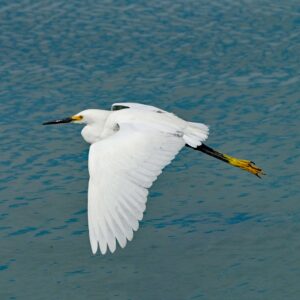
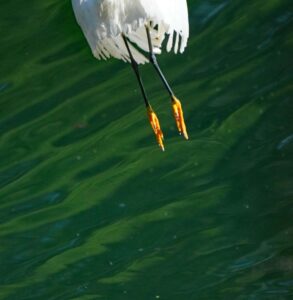
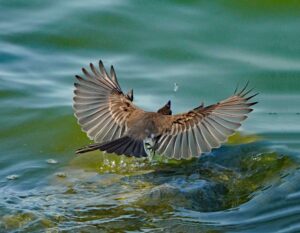
The American White Pelicans that we see in the Bay Area are nearly twice as heavy as their Brown Pelican cousins, some weighing as much as 20 pounds—the equivalent of a bowling ball! To carry that heavy bulk, their wings span nine feet or more. They are strong flyers, often seen on high, curving flight paths in the sky. Their wide wings also allow them to catch warm updrafts to rise effortlessly. This is useful for their summer migration, which carries them from their inland nesting grounds in the Great Basin and Great Plains above the glacially polished Sierra Nevada all the way to our Bay Area shores—taking advantage of thermals and high air currents along the way.
Mallards and other local ducks, meanwhile, are built for versatility. Their wings are strong and stiff, allowing for rapid takeoffs from water—essential when danger looms. They don’t soar so much as power through the air, fast and low, in tight formation. Efficiency, not elegance, is their strength.
And then, there are birds whose wings take them on a very different kind of flight—underwater! Offshore in the Farallon Islands, species like the Pigeon Guillemot and the Common Murre, both members of the Auk family, have adapted to “fly” beneath the waves. When these birds dive, they spread their wings and use powerful, rapid strokes to propel themselves through the water, chasing fish and other prey with remarkable agility. Watching them dive is like seeing flight reinvented entirely.
When I look at Dick’s photographs (a female mallard with wings spread wide enough to reveal her iridescent purple speculum feathers, a Caspian Tern with wings as sharp as a model airplane) it’s fun to imagine what it might feel like to move through the world in all these dazzlingly different ways. Birds’ wings are more than a means of travel; they reflect lifestyle, diet, habitat, and evolutionary history. With precision dives, effortless glides or tight, darting loops, each bird writes its own signature across the skies—and waters—of the Bay.
